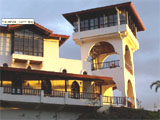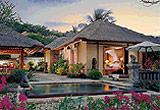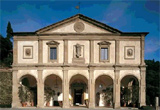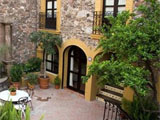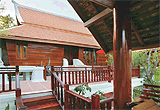One of the most important factors we consider when selecting a hotel is the dining scene. Along with the guestrooms and amenities, we want to know what the cuisine is like, because we consider eating essential to any holiday. Taking our love of fine food even further, we sought out hotels where you not only eat well, but also learn how to cook well. For those globetrotting gourmets who don’t have time to attend a comprehensive cooking academy, this list roams the world to reveal luxurious digs that offer lessons in the art of cookery. No matter how sophisticated the setting, all emphasize casual approaches, and all welcome amateurs and experts. If you want to combine your next escape with a lesson on how to make a soufflé or chicken galangal coconut soup, here’s what’s cooking at our top picks for hotel culinary schools.
___________________________
UNITED STATES
Scottsdale, Arizona
The Fairmont Scottsdale Princess—Jane Butel Satellite Cooking School
www.fairmont.com
 Chiles and corn. Tamales and moles. These are the tricks of Jane Butel’s culinary trade. Founder of the Southwestern Cooking School in Santa Fe, New Mexico, this noted authority on Southwestern and Mexican cuisine has opened a satellite “campus” at The Fairmont Scottsdale Princess. Here, she teams with Chef de Cuisine Forest Hamrick, in the atmospheric La Hacienda restaurant—a turn-of-the-century Mexican ranch house—to present dishes created for the program. Sessions are incorporated into special weekend hotel packages and include two six-hour cooking lessons and explorations of Mexican, Southwestern and Tex-Mex cuisine.
Chiles and corn. Tamales and moles. These are the tricks of Jane Butel’s culinary trade. Founder of the Southwestern Cooking School in Santa Fe, New Mexico, this noted authority on Southwestern and Mexican cuisine has opened a satellite “campus” at The Fairmont Scottsdale Princess. Here, she teams with Chef de Cuisine Forest Hamrick, in the atmospheric La Hacienda restaurant—a turn-of-the-century Mexican ranch house—to present dishes created for the program. Sessions are incorporated into special weekend hotel packages and include two six-hour cooking lessons and explorations of Mexican, Southwestern and Tex-Mex cuisine.
___________________________
AUSTRALIA
Clare Valley
Thorn Park Country House—Residential Cooking Schools
www.thornpark.com.au
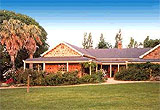 There is no finer pairing than food and wine, so it only makes sense to open a cooking school in wine country. Home to classes led by the convivial David Hay (who owns the property along with his partner, Michael Speers), Thorn Park is a traditional Australian homestead dating back to the 1850s. Outside you’ll find stately gum trees, wild olive trees and lavender, while indoors you’ll find a wealth of mid-week and weekend classes featuring fresh local produce and guest chefs. Meet the winemaker weekends introduce vintners from the region, which is known for Rieslings and Cabernet Sauvignons. David’s A La Carte Cooking Schools are customized for individual groups.
There is no finer pairing than food and wine, so it only makes sense to open a cooking school in wine country. Home to classes led by the convivial David Hay (who owns the property along with his partner, Michael Speers), Thorn Park is a traditional Australian homestead dating back to the 1850s. Outside you’ll find stately gum trees, wild olive trees and lavender, while indoors you’ll find a wealth of mid-week and weekend classes featuring fresh local produce and guest chefs. Meet the winemaker weekends introduce vintners from the region, which is known for Rieslings and Cabernet Sauvignons. David’s A La Carte Cooking Schools are customized for individual groups.
___________________________
COSTA RICA
Coyote Mountain
Costa Rica Hotel—Inn at Coyote Mountain
www.cerrocoyote.com
The only vacation cooking school in Central America holds one- to three-day inclusive cooking vacations with accommodation, meals and hands-on instruction in the heart of Costa Rica on a 70-acre nature preserve. This five-star luxury hotel and gourmet cooking school is situated in an idyllic retreat perched on a remote hilltop, with plenty of outdoor adventure activities to choose from. Charles Leary and Vaughn Perret, chef-owners of Trout Point Lodge in Nova Scotia, teach guests about sustainable and organic agriculture, as well as exploring the culinary history of America. Classes delve into Creole, Latin and Mediterranean styles of cookery. Among the highlights are field trips to markets, gardens and coffee plantations.
___________________________
FRANCE
Paris
Ritz Paris—Ritz Escoffier School
www.ritzparis.com
Imagine having a team of culinary experts at your disposal: a sauce chef, pastry chef, baker and even sommelier. At the Ritz Paris—the most famous hotel in the world, and one of our favorites—such masters are at your disposal. The Ritz Escoffier School (named after Auguste Escoffier, the hotel’s first head chef) was designed to train future professionals as well as amateur gourmets. Focusing on all aspects, from technique to presentation, its classes present the basics of French gastronomy in an informal setting. A variety of courses are available, including half-day seasonal workshops (Autumn Mushrooms, Christmas Dinner), meetings with winemakers over cookery demonstrations, food and wine pairings, evening workshops and three-day summer courses.
__________________________
INDONESIA
Bali
Four Seasons Resort Bali at Jimbaran Bay—Cooking School
www.fourseasons.com
The Four Seasons Resort Bali at Jimbaran Bay is about more than just private thatch-roofed villas and lots of pampering. You can also learn to use a tandoori oven, noodle boiler and duck roaster. The resort’s cooking school, which limits participants to ten per class, features its own dedicated chef and gourmet-savvy kitchen with a wall of glass that opens onto a stone-paved courtyard. Three independent modules explore the finer points of Balinese, Indonesian and spa cuisine. The first two include optional market tours, while the last introduces traditional ginger-based elixirs known as jamus. After each session, you sample your creations in the adjacent dining area.
___________________________
IRELAND
Belle Isle
Belle Isle Castle—Belle Isle School of Cookery
www.belleislecastle.com
Irish eyes are smiling on this 17th-century castle and cookery school on the Duke of Abercorn’s Belle Isle Estate in northern Ireland. In a purpose-built school next to the main courtyard, in kitchens designed to take advantage of natural daylight and views of the Florence Court Mountains, chef Liz Moore unites a modern approach and seasonal ingredients with traditional Irish recipes. Along with an intensive four-week essentials course, the school offers a series of classes for dilettantes—casual seven-day courses crafted around seasonal ingredients, weekend courses with the same focus (some welcome children), day and evening demonstrations with tastings and wine.
___________________________
ITALY
Florence
Villa San Michele—The Villa San Michele School of Cookery
www.villasanmichele.com
This 15th-century monastery on the hill of Fiesole overlooking Florence offers a stunning Renaissance setting in which to learn about Italian cuisine. It belongs to the swanky Orient-Express Hotel Group and operates a permanent culinary school with regularly scheduled classes offered on Mondays from April through October. Emphasis is on traditional Tuscan specialties, while additional multi-day courses concentrate on a specific element such as pasta (A Symphony of Pasta for Three Authors: Venice, Florence and Positano) or desserts (Life is Sweet). Guest chefs also highlight their unique techniques and approaches.
___________________________
MEXICO
San Miguel de Allende
Casa de Sierra Nevada
www.casadesierranevada.com
This luxury boutique hotel and cooking school is located in the heart of historic San Miguel de Allende. Situated in the Bajio area, it’s the fertile heartland of Mexico, renowned for the finest fruits, vegetables, poultry and meats. Culinary classes are held at Sazon, the 18th-century hacienda-turned cooking school at the Casa de Sierra Nevada, an Orient-Express hotel. Classes are offered in a four-night package, and include a unique highlight: attending the San Miguel market with the hotel’s chef Alma Montserrat Castro Salinas to receive tips from her on how to select the best of the crop and then bring them back to the kitchen to cook with. Your culinary package also includes tours highlighting the history and culture of Central Mexico, a Sazon culinary gift kit, and gourmet breakfast each morning at the hotel.
_________________________
MOROCCO
Marrakech
Dar Liqama—Rhodes School of Cuisine
www.rhodeschoolofcuisine.com
Exotic, exotic, exotic. With its fountains, arches and abundance of orange, lemon and apricot trees, “The House of Green Mint” is as much a sanctuary as the genuine oasis in which it resides—the exclusive, lush Palmeraie, home to over 150,000 palm trees in the desert just outside the walls of Marrakech. In partnership with Anissa Helou, author of Street Café Morocco, this traditional villa is used throughout the year for Moroccan cooking classes taught by the Rhodes School of Cuisine. Emphasis is on locally produced fresh ingredients (lots of saffron and cinnamon), as well as local history, culture and religion. Lessons are taught in the demonstration kitchen or al fresco, weather permitting.
___________________________
THAILAND
Chiang Mai
The Oriental Dhara Dhevi—Le Grand Lanna Cooking Academy
www.mandarinoriental.com
The Oriental Dhara Dhevi is a haven in the center of Chiang Mai. The hotel’s Le Grand Lanna Cooking Academy focuses on fine Thai cuisine, although you’ll find market favorites such as Green Papaya Salad. Classes are offered every day (except Sunday), and each have their own emphasis, such as Thai herbs and Thai noodles. There are also specialty sessions, including fruit and vegetable carving, and tours of the local markets.


